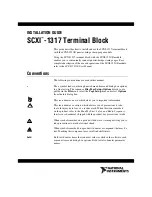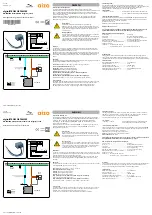
Foreword
EL28xx-xxxx
16
Version: 2.2
Fig. 11: Short circuit fault exclusion through protected cable laying
◦
a) Possibility 1: Load connection via separate sheathed cables
The non-safely switched potential of the standard terminal may not be conducted together with
other potential-conducting cores inside the same sheathed cable.
(Fault exclusion, see EN ISO
13849-2:2013, Table D.4)
◦
b) Possibility 2: Wiring only inside the control cabinet
All loads connected to the non-safe standard terminals must be located in the same control
cabinet as the terminals. The cables are routed entirely inside the control cabinet.
(Fault exclusion,
see EN ISO 13849-2:2013, Table D.4)
◦
c) Possibility 3: Dedicated earth connection per conductor
All conductors connected to the non-safe standard terminals are protected by their own earth
connection.
(Fault exclusion, see EN ISO 13849-2:2013, Table D.4)
◦
d) Possibility 4: Cable permanently (fixed) installed and protected against external damage
All conductors connected to the non-safe standard terminals are permanently fixed and, e.g.
protected against external damage by a cable duct or armored pipe.
•
Effect of the options on the safety level
In principle, standard terminals in safely switched potential groups are not an active part of the safety
controller. Accordingly,
the safety level attained is defined only by the higher-level safety
controller
, i.e. the standard terminals are not included in the calculation! However, the wiring of the
standard terminals can lead to limitations in the maximum attainable safety level.
Depending on the solution selected for the avoidance of feedback and the safety standard considered
(see Option 1 and Option 2), different maximum attainable safety levels result, which are summarized
in the following table:
Summary of safety classifications
Feedback avoidance mea-
sures
DIN EN ISO 13849-1
IEC 61508
EN 62061
Fault exclusion
Cable short-circuit
max.
Cat. 4
PLe
max. SIL3
max. SIL2 *
Ground feedback and all-
pole disconnection
max. SIL3
















































